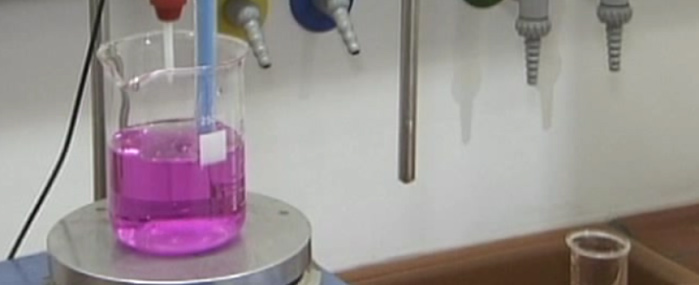
Direct Links:
Handling of liquids
When transporting liquids and especially greater amounts of liquid a bucket should always be used to prevent leakage. In case the bearer slips the bucket stops the liquid from spreading on the ground. Otherwise the formation of toxic or explosive vapors could cause the laboratory to be evacuated.
A funnel should always be used to decant liquids as long as the funnel does not decrease the stability of the beaker. In this case the liquid can be decanted directly into the beaker. Before decanting, protective gloves should be put on and a paper towel should be placed nearby. Thin rubber gloves grant only poor resistance against organics, the gloves should be made out of an appropriate material. Should the liquid in the beaker be transported, a watch glass should be placed on top of the beaker to prevent vapor from escaping.
Decanting liquids into a conical flask should always be done with a funnel. The scale on a beaker or conical flask is too imprecise to measure the amount of liquid accurately. When working with large amounts of liquid, a graduated cylinder can be used. For experiments with higher accuracy a volumetric or graduated pipette is necessary. The volumetric pipette contains a defined amount of liquid when the liquid level is at the measuring line. For daily use the graduated pipette proves useful. A pasteur pipette can be used to transfer small amounts of liquids, but is not graduated. The graduated and volumetric pipettes are handled with a bulb filler. By applying a partial vacuum the bulb filler causes the pipette to suck up liquids. The liquids can be let out by pressing the E-Valve. The cone of the pipette should always point downwards to prevent liquid from running into the bulb filler.